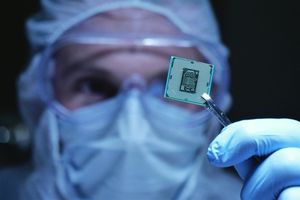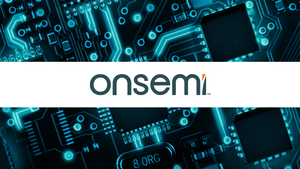The "Industrial Automation Market Industry Trends and Global Forecasts to 2035: Distribution by Type of Component, Mode of Automation, Type of Industry, Process Industry," report has been added to ResearchAndMarkets.com's offering.
The global industrial automation market size is estimated to grow from USD 169.82 billion in 2025, to USD 443.54 billion by 2035, at a CAGR of 9.12% during the forecast period, to 2035.
The report delivers a comprehensive market analysis, including detailed revenue projections for the overall market and its sub-segments, making it valuable for both established leaders and new entrants. It enables stakeholders to understand competitive dynamics, supporting informed decisions on market positioning and go-to-market strategies. Additionally, the report outlines key drivers, barriers, opportunities, and challenges, helping stakeholders stay updated on trends and make data-driven decisions to capitalize on growth opportunities.
The industrial automation market is a vibrant and swiftly changing field that transforms traditional manufacturing methods by incorporating state-of-the-art technologies. This market plays a crucial role in improving operations, efficiency, and economies across various business sectors. It includes a diverse array of automation solutions such as robotics, control systems, sensors, and software, all designed to enhance effectiveness and safety within the production process while guaranteeing consistency and dependability of manufactured goods.
The rising demand for industrial products has prompted a transition from traditional industrial methods to fully automated systems that boost efficiency and reduce operational costs for both processes and products. This transition has resulted in decreased labor needs and expenses, as well as increased goods production, further invigorating the industry. For example, in 2024, Piaggio Fast Forward (PFF), the Boston subsidiary of the Italian automotive firm Piaggio, launched kilo, a factory robot equipped with artificial intelligence.
The growing necessity for high-quality products that comply with stringent regulatory and government standards encourages businesses to embrace automation solutions. These technologies aid in maintaining product uniformity and compliance with regulatory mandates. It is noteworthy that various acquisitions are contributing to a significant investment aimed at improving the overall market. For instance, in April 2024, Lear bolstered its automation and artificial intelligence capabilities through the strategic acquisition of WIP industrial automation.
The rising expense of machinery can pose challenges in the short term, and small and medium-sized enterprises (SMEs) find it difficult to invest in machinery due to its high acquisition and maintenance costs. Moreover, machinery that operates over the internet faces obstacles because of cyber security threats. Despite the challenges presented by the expenses and vulnerabilities associated with machinery in industrial environments, the market is growing exceptionally well, driven by opportunities for expansion and the introduction of innovative solutions.
Further, the advent of advanced tools and technologies, like Industrial Internet of Things (IIoT) technology and integrated Artificial Intelligence (AI) algorithms, provides further possibilities for predictive maintenance, analytics, and informed decision-making. These innovations can improve operational efficiency, minimize losses, and enhance potential profit margins, suggesting that the market is experiencing exponential growth and is expected to continue expanding in the future.
INDUSTRIAL AUTOMATION MARKET: KEY SEGMENTS
Market Share by Type of Component
Based on the type of component, the global industrial automation market is segmented into hardware, software, and services. Currently, hardware segment captures the majority share of the market, owing to the growing demand for physical components necessary for establishing automation systems. However, software segment is anticipated to grow at a higher CAGR during the forecast period.
Market Share by Mode of Automation
Based on the mode of automation, the industrial automation market is segmented into fixed, programmable, flexible, and integrated automation systems. Currently, programmable automation captures the majority share of the market. This can be attributed to its capability to swiftly adjust to various product designs and high demand for flexible automation in the electronics, automotive, and consumer goods sectors.
Market Share by Type of Industry
Currently, oil and gas sector captures the majority share of the market. This can be attributed to substantial investments in automation, driven by the complexity of operations and the necessity for efficient resource management. Additionally, the manufacturing sector includes a wide array of industries that heavily depend on automation for enhancing operational efficiency and productivity, thereby significantly propelling overall market growth
Market Share by Type of Offering
Based on the type of offering, the industrial automation market is segmented into solutions and services, which are further split into enterprise-level controls, plant instrumentation, consulting services and others. Currently, plant-level controls, which consist of control systems like PLCs (Programmable Logic Controllers), DCS (Distributed Control Systems), and HMI (Human-Machine Interface) systems, captures the majority share of the market. This can be attributed to their essential role in the real-time control and monitoring of manufacturing processes.
Market Share by Type of Deployment
Currently, cloud-based deployment captures the majority share of the market. This can be attributed to its remote accessibility, adaptability, and lower maintenance needs. The choice between these deployment types can differ based on the unique requirements and preferences of organizations in each industry sector. Although on-premises solutions were historically more prevalent, the shift towards cloud-based options is progressively increasing owing to advantages such as scalability, flexibility, and cost efficiency. The deployment market is continually demonstrating exponential growth driven by automation and is expected to expand further in the future.
Market Share by Type of Product
Currently, distributed control systems (DCS) and programmable logic controllers (PLC), captures the majority share of the market, owing to their broad application in intricate industrial processes and manufacturing.
However, there are several other product components that are also prevalent in the market. Key examples include SCADA systems, which are extensively employed across various industries for real-time data gathering and management. These systems are particularly important in sectors such as oil and gas, water treatment, and energy. Further, the increasing use of industrial robots and machine vision systems is fueled by technological advancements and the rising need for automation in manufacturing, propelling market growth.
Market Share by Area of Application
Currently, assembly line automation captures the majority share of the market. This can be attributed to its inclusion of automated systems for product assembly, primarily employed in sectors such as automotive, electronics, and manufacturing. Moreover, there has been a notable increase in the growth of material handling automation, which occupies a considerable portion of the market owing to the use of robotic arms, automated guided vehicles (AGVs), and conveyor systems for the movement, storage, and management of goods.
Market Share by End User
Currently, automotive sector captures the majority share of the market. This can be attributed to strong dependence on automation for manufacturing processes, quality assurance, and assembly lines, which boosts productivity and ensures accuracy.
Additionally, the food and beverage sector is witnessing increased market value due to the necessity for hygiene, effective packaging, and consistent product quality. Industrial automation plays a vital role in the manufacturing, packaging, and distribution of various products, including pharmaceuticals, which further drives growth and results in a significant upward trend in the overall segment.
Market Share by Type of Business Model
Based on the type of business model, the industrial automation market is segmented into B2B, B2C and B2B2C. Currently, B2B captures the majority share of the market. This can be attributed to the rising adoption of global industrial automation technologies across various industries, including manufacturing, healthcare, finance, and more. Additionally, the B2C model is projected to experience a significant CAGR throughout the forecast period, as global industrial automation technologies are becoming increasingly user-friendly, and consumers are adopting these technologies for manufacturing and managing products.
Market Share by Geographical Regions
North America captures the majority share of the market. This can be attributed to various factors increased awareness, leading to a higher demand in commercial sectors such as retail, banking, and corporate environments.
Additionally, government investment aimed at enhancing public safety and safeguarding critical infrastructure has surged significantly. Moreover, the adoption of advanced video analytics and integrated surveillance systems has played a crucial role in increasing demand for global industrial automation solutions. However, market in Asia is anticipated to grow at a higher CAGR during the forecast period.
SCOPE OF THE REPORT
Type of Component
- Hardware
- Software
Mode of Automation
- Flexible
- Fixed
- Integrated
- Programmable
Type of Industry
- Discrete Industry
- Automotive
- Process Industry
- Food & Beverage
- Healthcare
- Manufacturing
- Oil & Gas
Type of Offering
- Services
- Solutions
- Enterprise-level Controls
- Plant Instrumentation
- Plant-level Controls
Type of Deployment
- Cloud-based
- On Premises
Type of Product
- Distributed Control System
- Human-Machine Interface
- Industrial Robots
- Machine Vision Systems
- Manufacturing Execution Systems (MES)
- Programmable Logic Controller (PLC)
- Supervisory Control and Data Acquisition (SCADA)
Area of Application
- Distributed Control System
- Human-Machine Interface
- Industrial Robots
- Machine Vision Systems
- Manufacturing Execution Systems (MES)
- Programmable Logic Controller (PLC)
- Supervisory Control and Data Acquisition (SCADA)
Company Size
- Large Enterprises
- Small and Medium-sized Enterprises (SMEs)
End User
- Automotive
- Chemicals & Petrochemicals
- Electronics & Semiconductors
- Food & Beverage
- Mining & Metals
- Oil & Gas
- Pharmaceuticals
- Power Generation
- Pulp & Paper
- Water and Wastewater
- Others
Business Model
- B2B
- B2C
- B2B2C
Profiled in the Report
- Accuron Technologies
- Automi AI
- B&R
- Danaher Industrial
- Electrotek
- Elaratech Automation
- Emerson
- FANUC America Corporation
- Festo
- Flexciton
- General Electric
- Hitech Digital Solutions
- Honeywell
- JM VisTec System
- Kawasaki Heavy Industries
- Metis Labs
- Mitsubishi Electric
- Omron Automation
- Phoenix Contact
- Quadrant Technologies
- Rockwell Automation
- SAVCOS Automation
- Schneider Electric
- SESTO Robotics
- Siemens
- SmartClean Technologies
- SMEC Automation
- TVARIT
- Xiaoxin Machines
- Yokogawa Electric
ADDITIONAL BENEFITS
- Complimentary Excel Data Packs for all Analytical Modules in the Report
- 10% Free Content Customization
- Detailed Report Walkthrough Session with Research Team
- Free Updated report if the report is 6-12 months old or older
For more information about this report visit https://www.researchandmarkets.com/r/g7r9je
About ResearchAndMarkets.com
ResearchAndMarkets.com is the world's leading source for international market research reports and market data. We provide you with the latest data on international and regional markets, key industries, the top companies, new products and the latest trends.
View source version on businesswire.com: https://www.businesswire.com/news/home/20250618310982/en/
Contacts
ResearchAndMarkets.com
Laura Wood, Senior Press Manager
press@researchandmarkets.com
For E.S.T Office Hours Call 1-917-300-0470
For U.S./ CAN Toll Free Call 1-800-526-8630
For GMT Office Hours Call +353-1-416-8900





